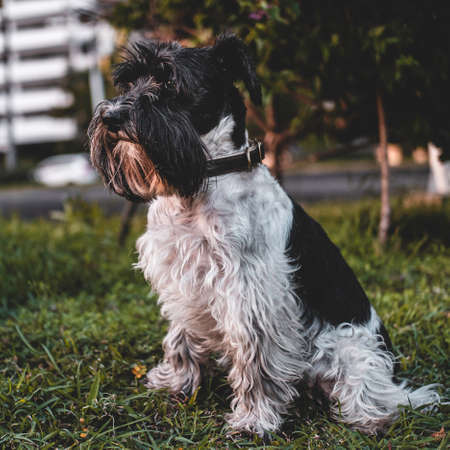1. Common Causes of Mold and Bacteria in Pet Enclosures
Keeping your pets enclosure clean and hygienic is essential for their health. However, mold and bacteria can easily develop if certain conditions are present. Understanding the main causes can help you take preventive measures.
Humidity and Moisture
Excess moisture is one of the biggest contributors to mold and bacterial growth. Many pet enclosures, especially for reptiles, amphibians, and small mammals, require a certain level of humidity. However, when humidity levels get too high, condensation can form on surfaces, creating an ideal environment for mold and bacteria.
Poor Ventilation
Airflow plays a crucial role in preventing mold and bacteria buildup. Enclosures with limited ventilation trap moisture, leading to stale air and damp surfaces. Without proper airflow, organic waste and excess humidity linger longer than they should, encouraging microbial growth.
Organic Waste Buildup
Food scraps, droppings, and bedding materials provide a perfect breeding ground for bacteria and mold if not cleaned regularly. Decomposing organic matter releases moisture and nutrients that fuel microbial growth, leading to potential health risks for your pet.
Common Factors Leading to Mold and Bacteria Growth
| Cause | Description |
|---|---|
| High Humidity | Creates damp surfaces where mold and bacteria thrive. |
| Lack of Ventilation | Traps stale air and moisture inside the enclosure. |
| Organic Waste Accumulation | Provides nutrients that encourage microbial growth. |
| Poor Cleaning Routine | Allows bacteria and mold to establish colonies over time. |
Signs of Mold and Bacteria Presence
Recognizing early signs of contamination can help prevent serious problems. Look out for:
- Visible Mold Growth: Black, green, or white fuzzy spots on surfaces.
- Musty Odors: A strong, damp smell indicating fungal growth.
- Discoloration: Stains or dark patches on bedding or enclosure walls.
- Pet Health Issues: Respiratory problems, skin infections, or unusual behavior.
Preventive Measures
The best way to deal with mold and bacteria is by preventing them in the first place. Regular cleaning, proper ventilation, and maintaining optimal humidity levels are key strategies to keep your pets habitat safe and healthy.
By understanding these common causes, you can take proactive steps to ensure your pet’s enclosure remains a clean and comfortable space.
2. Health Risks for Pets and Owners
When mold and bacteria build up in your pets enclosure, they don’t just create an unpleasant environment—they can also lead to serious health problems for both pets and their owners. Understanding the risks can help you take proactive steps to maintain a clean and safe space.
Respiratory Issues
Mold spores and bacterial growth can significantly affect respiratory health. Pets, especially small animals like rodents, birds, and reptiles, have delicate respiratory systems that can be irritated by airborne contaminants. Signs of respiratory distress include:
- Frequent sneezing or coughing
- Wheezing or difficulty breathing
- Nasal discharge
- Lethargy or reduced activity
For owners, prolonged exposure to mold spores can trigger asthma attacks or cause persistent coughing and congestion.
Skin Infections
Damp, unclean environments encourage bacterial and fungal growth, which can lead to skin infections in pets. Animals with constant exposure to contaminated bedding or surfaces may develop:
- Red, inflamed skin
- Itchy patches or excessive scratching
- Sores or hair loss
- A foul odor from the affected area
If left untreated, these infections can spread and become more severe. Owners handling contaminated enclosures without proper hygiene precautions may also develop rashes or infections.
Allergic Reactions
Mold spores and bacteria can trigger allergic reactions in both pets and humans. Symptoms may vary depending on sensitivity levels but commonly include:
| Symptoms in Pets | Symptoms in Humans |
|---|---|
| Sneezing and nasal discharge | Sneezing and runny nose |
| Itchy skin or rashes | Skin irritation or hives |
| Persistent ear infections | Coughing or throat irritation |
| Lethargy and discomfort | Watery eyes and headaches |
If you or your pet start showing signs of allergies that worsen over time, it could indicate an issue with mold or bacterial buildup in the enclosure.

3. Effective Cleaning and Sanitization Methods
Keeping your pet’s enclosure clean is essential for their health and well-being. Mold, bacteria, and other hygiene issues can quickly build up if regular cleaning isn’t maintained. Below is a step-by-step guide on how to properly clean and sanitize pet enclosures using pet-safe products.
Step-by-Step Cleaning Guide
1. Gather Your Cleaning Supplies
Before you start, make sure you have all the necessary cleaning materials:
- Pet-safe disinfectant (e.g., vinegar solution, hydrogen peroxide, or commercial pet-friendly cleaners)
- Mild soap or unscented dish detergent
- Clean sponges or microfiber cloths
- Scrub brush for tough spots
- Paper towels or clean rags
- Gloves for protection
- A spray bottle for diluted cleaning solutions
2. Remove Your Pet and Accessories
For a thorough cleaning, take your pet out of the enclosure and place them in a safe temporary space. Remove all food bowls, water dispensers, bedding, toys, and any decorations.
3. Dispose of Waste and Debris
Remove any solid waste, uneaten food, or soiled bedding. If your pet has a litter box or substrate, dispose of it properly according to your pet’s needs.
4. Wash and Scrub the Enclosure
Using warm water and mild soap, scrub all surfaces of the enclosure thoroughly. Pay close attention to corners, crevices, and any areas where mold or bacteria may accumulate.
5. Disinfect Properly
Use a pet-safe disinfectant to eliminate bacteria and mold. Allow it to sit for the recommended time before wiping it off.
| Disinfectant Type | How to Use | Safety Notes |
|---|---|---|
| Diluted White Vinegar (1:1 with water) | Spray onto surfaces, let sit for 10 minutes, then wipe clean. | Avoid using on porous materials like wood; strong smell but safe once dry. |
| Hydrogen Peroxide (3%) | Apply directly to surfaces, let sit for 5-10 minutes, then rinse thoroughly. | Can lighten fabric or materials; do not mix with vinegar. |
| Commercial Pet-Safe Disinfectants | Follow manufacturer instructions for dilution and application. | Ensure it is labeled as safe for pets before use. |
6. Rinse Everything Thoroughly
If using soap or disinfectants that require rinsing, make sure to wash away all residues with clean water to prevent any harm to your pet.
7. Dry Completely Before Reassembling
Mold thrives in damp environments. Make sure the enclosure is completely dry before placing bedding, accessories, and food/water dishes back inside.
8. Return Your Pet to Their Clean Space
Once everything is set up and dry, return your pet to their freshly cleaned habitat.
Recommended Cleaning Schedule
| Task | Frequency |
|---|---|
| Spot cleaning (removing waste & uneaten food) | Daily |
| Bowl & water dispenser cleaning | Every 1-2 days |
| Bedding replacement & surface wipe-down | Weekly |
| Deep cleaning & full disinfection | Bi-weekly or monthly (depending on pet type) |
| Litter/substrate replacement (if applicable) | As needed (weekly/monthly) |
A consistent cleaning routine will help keep your pet’s enclosure free from harmful bacteria and mold while ensuring they live in a safe and hygienic environment.
4. Preventive Measures to Keep Enclosures Hygienic
Keeping your pets enclosure clean and hygienic is essential for their health and well-being. By taking preventive measures, you can reduce the risk of mold, bacteria, and other hygiene-related issues. Here are some practical tips to maintain a safe and sanitary environment for your pet.
Proper Ventilation
Good airflow helps prevent excess moisture buildup, which can lead to mold growth and bacterial development. Make sure your pet’s enclosure has adequate ventilation by following these steps:
- Use enclosures with built-in ventilation holes or mesh panels.
- Avoid placing enclosures in humid or poorly ventilated areas.
- If needed, use a small fan or dehumidifier to improve air circulation.
Using Moisture-Absorbing Materials
Excess moisture can create an ideal breeding ground for bacteria and mold. Using moisture-absorbing materials can help keep the enclosure dry and clean.
| Material | Benefits |
|---|---|
| Baking soda | Absorbs odors and moisture effectively. |
| Silica gel packets | Helps control humidity inside enclosed spaces. |
| Cedar or pine bedding (for certain pets) | Naturally repels moisture and pests. |
| Paper-based bedding | An absorbent option that is safe for many pets. |
Routine Maintenance Habits
A consistent cleaning schedule prevents dirt, bacteria, and mold from accumulating in your pet’s living space. Follow these maintenance habits:
Daily Tasks
- Remove uneaten food to prevent spoilage and bacterial growth.
- Scoop out waste and replace soiled bedding or litter as needed.
- Check for any signs of mold, dampness, or bad odors.
Weekly Cleaning
- Wipe down surfaces with pet-safe disinfectants.
- Cleans food and water dishes thoroughly with hot, soapy water.
- Avoid using harsh chemicals that could be harmful to pets.
Monthly Deep Cleaning
- Dismantle the enclosure (if possible) and wash all components.
- Sterilize items like toys, hides, and accessories.
- Avoid excessive moisture when cleaning to prevent future mold growth.
Taking proactive steps like ensuring proper airflow, using moisture-control materials, and maintaining a regular cleaning routine will help keep your pets enclosure fresh, healthy, and free from harmful contaminants.
5. When to Seek Professional Help
Keeping your pet’s enclosure clean is essential, but sometimes, despite your best efforts, professional intervention may be necessary. Knowing when to call in experts can help protect your pet from serious health risks.
Signs That Require Professional Cleaning
In some cases, mold, bacteria, and other hygiene issues in a pet enclosure become too severe for regular cleaning methods. Here are some signs that indicate professional cleaning services might be needed:
| Situation | Why Professional Help Is Needed |
|---|---|
| Persistent Mold Growth | If mold keeps returning despite thorough cleaning, professionals can eliminate it completely and address underlying causes like excess moisture. |
| Strong or Unusual Odors | If bad smells persist even after deep cleaning, there may be hidden bacteria or fungal growth requiring specialized treatment. |
| Pest Infestation | The presence of mites, fleas, or other pests in the enclosure may require professional extermination to prevent harm to your pet. |
| Toxic Chemical Exposure | If harmful substances have contaminated the enclosure (e.g., chemical spills or pesticide exposure), professionals can safely clean and disinfect the area. |
| Deteriorating Enclosure Materials | If parts of the enclosure (wood, plastic, or metal) are breaking down due to mold or bacterial damage, specialists may need to replace or restore them. |
When to Consult a Veterinarian
If your pet shows any of the following symptoms, they could be suffering from exposure to mold, bacteria, or poor hygiene conditions:
- Respiratory Issues: Sneezing, coughing, wheezing, or labored breathing may indicate exposure to harmful mold spores.
- Skin Irritations: Redness, itching, hair loss, or sores could result from bacterial infections or pest infestations.
- Lethargy or Loss of Appetite: If your pet seems unusually tired or refuses to eat, an infection caused by poor sanitation might be the cause.
- Digestive Problems: Vomiting, diarrhea, or bloating may suggest bacterial contamination in food or water sources within the enclosure.
- Bizarre Behavior: Unusual aggression, excessive hiding, or signs of distress might indicate discomfort caused by an unclean living environment.
The Benefits of Professional Help
A professional cleaning service ensures that all harmful contaminants are completely removed from your pet’s living space. Additionally, veterinarians can provide medical care if health issues arise due to poor hygiene conditions. Seeking expert help when necessary ensures that your pet remains safe and comfortable in a clean and healthy environment.


